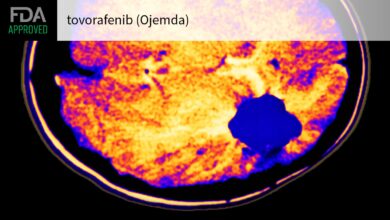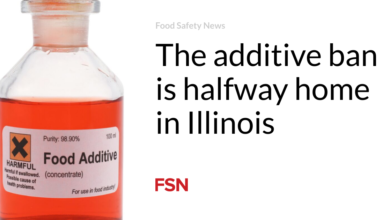The Ethos of Emergency Medicine Hangs in the Balance

— A Supreme Court ruling could impact how pregnant patients are treated in certain states’ EDs
by
Monica Saxena, MD, JD, Dara Kass, MD, Esther Choo, MD, MPH, and Jennifer A. Newberry, MD, JD, MSc
March 8, 2024
Saxena is a clinical assistant professor. Kass is an emergency medicine physician and was formerly a regional director at HHS. Choo is a professor of emergency medicine and a health services researcher. Newberry is an associate professor of emergency medicine.
The ethos of emergency medicine — any patient, any time, any problem — could be radically changed, considering pending legal challenges that may result in the Supreme Court invalidating or limiting the Emergency Medical Treatment and Labor Act (EMTALA).
In April, the Supreme Court is poised to hear arguments in U.S. v. the State of Idaho, a case that asks the question: What happens when an abortion is necessary to save the life of the mother and abortion is illegal in that state? Does EMTALA protect the emergency physician in delivering lifesaving and well-established standard of care for pregnant persons with life threatening conditions?
Following the Dobbs decision, 24 states have some form of an abortion ban, with 11 of these bans not yet enforced following court challenges. Three of the states — Idaho, North Dakota, and Tennessee — include no exception for the life of the mother. In one of those states, Idaho, as well as in Texas (a state with an exception for the life of the mother), recent conflicting EMTALA rulings may have broader consequences for all emergency physicians in the U.S.
Both decisions involve the Supremacy Clause of the Constitution, which specifies that when federal law conflicts with state law, federal law takes precedence over state law. Also at play in these EMTALA challenges is the HHS Guidance Letter that was issued less than one month after the Supreme Court announced the Dobbs decision interpreting EMTALA. In that letter, HHS specifies that if a physician believes that a pregnant patient presenting at an emergency department is experiencing an emergency medical condition, and that abortion is the treatment necessary to stabilize that condition, the physician must provide that treatment.
Just 3 days after HHS issued the letter, the state of Texas filed a lawsuit against the guidance and won in district court, with the court stating that the HHS guidance goes beyond the scope of EMTALA. Under the court’s reasoning, EMTALA’s language “protects both mothers and unborn children,” yet the subsequent HHS guidance provides additional direction to prioritize the life of the mother (and not the fetus) and thus the HHS guidance extends beyond the scope of EMTALA.
The court stated that the HHS guidance “discards [EMTALA’s] requirement to consider the welfare of unborn children when determining how to stabilize a pregnant woman.” Moreover, the Texas District Court noted that EMTALA does not specifically discuss abortion, and thus there is no conflict between EMTALA and Texas state law banning abortion after 6 weeks. Without a conflict, the state law remains in effect.
In contrast, a case in Idaho reached the exact opposite conclusion. In this case, the Justice Department sued the state of Idaho, arguing that Idaho’s abortion ban, which has no exception for the life of a mother, conflicts with EMTALA and thus is unlawful. An Idaho district court agreed, noting that “Idaho’s criminal abortion law will undoubtedly deter physicians from providing abortions in some emergency situations,” subjecting “women in medical crisis to periods of ‘serious physical and emotional trauma’ as they wait to get nearer and nearer to death.”
What is at stake in the Supreme Court ruling in these EMTALA challenges is whether the stabilization of emergency medical conditions, such as ectopic pregnancy, includes an abortion. It is important to note that the discussion of medical decision making and the physician-patient relationship — which was initially given deference in abortion rulings and was slowly removed over time from the Court’s abortion decisions — is largely absent from these recent EMTALA challenges. Moreover, when the high court has considered other healthcare-related federal statutes, such as those regulating health insurance, it has sided with the states.
It is difficult to definitively predict how the Supreme Court will rule when presented with the EMTALA case. Conservative ideology (which is projected to dominate the Supreme Court for the next three decades) tends to favor less federal government intervention and greater state autonomy. As such, the court very well may return the decision of how to interpret EMTALA to the states. If that happens — as emergency physicians in Texas are already experiencing — our ability to care for any patient, any time, any problem may no longer be the creed of our specialty.
Monica Saxena, MD, JD, is a clinical assistant professor at Stanford University School of Medicine in Palo Alto, California where her research focuses on women’s health and reproductive justice in the emergency department. Dara Kass, MD, is a practicing emergency medicine physician, and formerly a regional director at HHS. Her research and policy interests include the expansion of reproductive healthcare and the intersection of federal and state policies in supporting healthcare access and funding. Esther Choo, MD, MPH, is a professor of emergency medicine and health services researcher at Oregon Health & Science University in Portland. She is a health columnist for MSNBC and consultant at Equity Quotient, which advances health equity. Jennifer A. Newberry, MD, JD, is an associate professor at Stanford University School of Medicine. Her research focuses on how people can be connected to care when they are in crisis, particularly in the areas of intimate partner violence and mental health.


